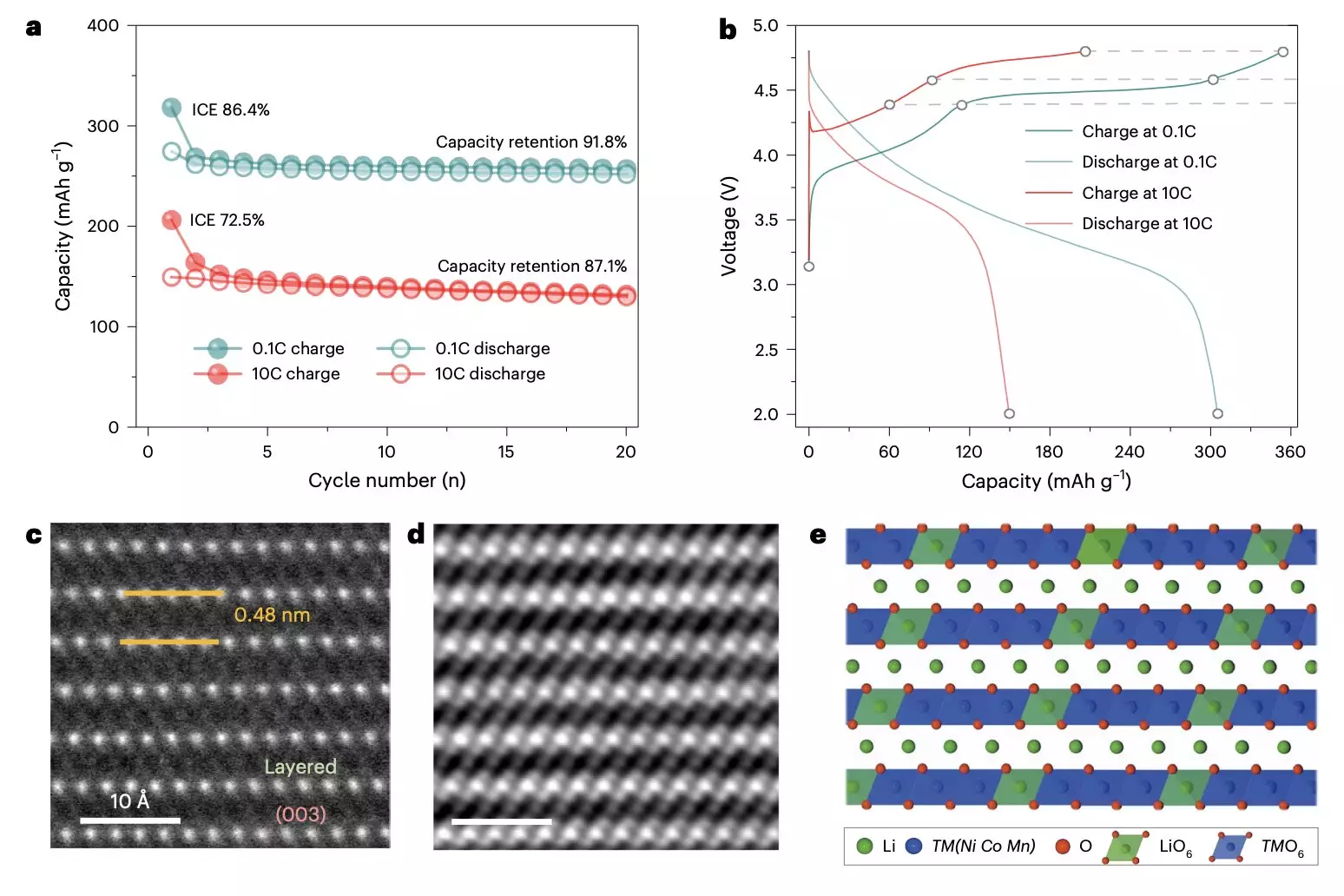In the quest for sustainable energy solutions, the advancement of battery technologies remains a pivotal area of research. As electric vehicles (EVs) and portable electronic devices become ubiquitous in modern life, the demand for batteries that can offer higher energy densities, faster charging times, and longer operational lifespans has intensified. Researchers are continuously exploring innovative cathode materials to enhance battery performance, with layered lithium-rich transition metal oxides emerging as a noteworthy area of study. However, while these materials present substantial promise, they also pose significant challenges that impede their widespread application in next-generation batteries.
Layered lithium-rich transition metal oxides, characterized by their unique structural properties, have garnered attention due to their potential to significantly enhance energy storage capabilities. These cathodes possess a layered structure that facilitates the movement of lithium ions during charging and discharging cycles. Their lithium-rich composition allows for greater energy retention, making them ideal candidates for high-performance applications in both electric vehicles and consumer electronics.
The effectiveness of these cathodes is largely attributed to their incorporation of transition metals like manganese (Mn), cobalt (Co), and nickel (Ni). These metals play a critical role in enabling reduction-oxidation (redox) reactions—essential processes that allow batteries to store and release energy efficiently. However, despite these advantages, the reality is that the structural stability of layered lithium-rich metal oxide cathodes is often compromised, leading to performance degradation over time.
Degradation Mechanisms: Unpacking the Complexity
A major hurdle in optimizing layered lithium-rich cathodes lies in understanding the mechanisms of their degradation. A collaborative study involving researchers from Sichuan University and the Southern University of Science and Technology in China has shed light on the intricate pathways that lead to the deterioration of these materials. Published in Nature Nanotechnology, their findings explore various factors—structural, chemical, kinetic, and thermodynamic—that contribute to the diminishing performance of batteries employing these cathodes.
Utilizing advanced imaging techniques, such as energy-resolved transmission X-ray microscopy (TXM), the researchers were able to analyze the structural integrity of layered lithium-rich cathodes at both nanoscale and microscale levels. This innovative methodology allowed them to identify the presence of oxygen defects and distortions that arise during the initial charging cycles, which further exacerbate degradation. These defects not only impede performance but also initiate a series of structural changes, leading to irreversible damage in the cathode material.
Structural Changes and Their Consequences
The research team identified that the gradual formation of oxygen defects during slow electrochemical activation incites progressive phase transformations within the cathode. This can lead to the emergence of nanovoids and various inhomogeneous structural alterations, which, in turn, contribute to diminished Coulombic efficiency and increased susceptibility to mechanical stress. The fast intercalation and deintercalation of lithium ions exacerbate lattice distortions, causing further complications such as transition metal dissolution and migration of lithium ions to different sites.
As a result, the cumulative effects of these degradation mechanisms manifest as particle cracking and expansion, ultimately undermining the battery’s overall performance. The findings underline the pressing need for strategies that can effectively mitigate these challenges to unlock the full potential of lithium-rich transition metal oxides in battery technology.
While the obstacles presented by layered lithium-rich cathodes may seem daunting, the insights gleaned from this research offer valuable direction for future studies. By elucidating the underlying causes of degradation, researchers are better equipped to engineer solutions aimed at enhancing the longevity and stability of these materials. There is considerable promise that innovations in cathode design and formulation could lead to more resilient battery systems that harness the benefits of layered lithium-rich transition metal oxides without succumbing to rapid deterioration.
The exploration of advanced battery technologies continues to be a dynamic field, with layered lithium-rich transition metal oxides at the forefront of innovation. As researchers delve deeper into understanding and overcoming the challenges associated with these materials, the dream of more efficient, longer-lasting batteries for electric vehicles and portable devices may soon become a reality, paving the way for a more sustainable energy future.

